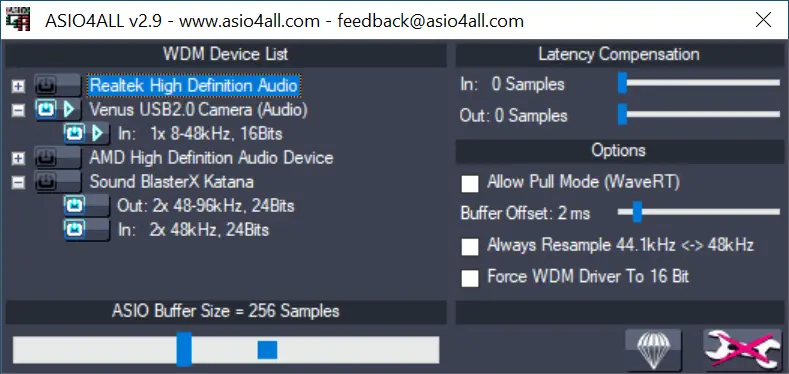- Update 21 August 2009: Turkish localization added.
- Update 18 August 2009: Spanish localization added.
- Update 31 March 2009: Portuguese localization added.
- Update 16 March 2009: Russian localization added.
- Update 15 Nov: Italian localization added.
- Combined 32/64 bit version, supports Win 98SE/ME/2k/XP/MCE/2003/XP64 and Vista x86/x64.
- Some localizations are still in the pipe. In order to avoid duplicate work, please do not send unsolicited translations! If you want to help with localization, and you really mean it, please be prepared to also write the/a manual in your language! Hacking the GUI is fun (I know), but without a native manual, folks will still be lost!
Changes since version 2.9 beta 5:
- Fix a minor issue with the default configuration in x64.
- Changes to the ASIO buffer size now only take effect when the slider is released, avoiding a possible reset message storm for the host.
- ASIO channel names that are too long are cut off a little more intelligently.
- Add workaround for HD Audio input “Chopper Sound” issue on some Vista systems.





Leave a Reply